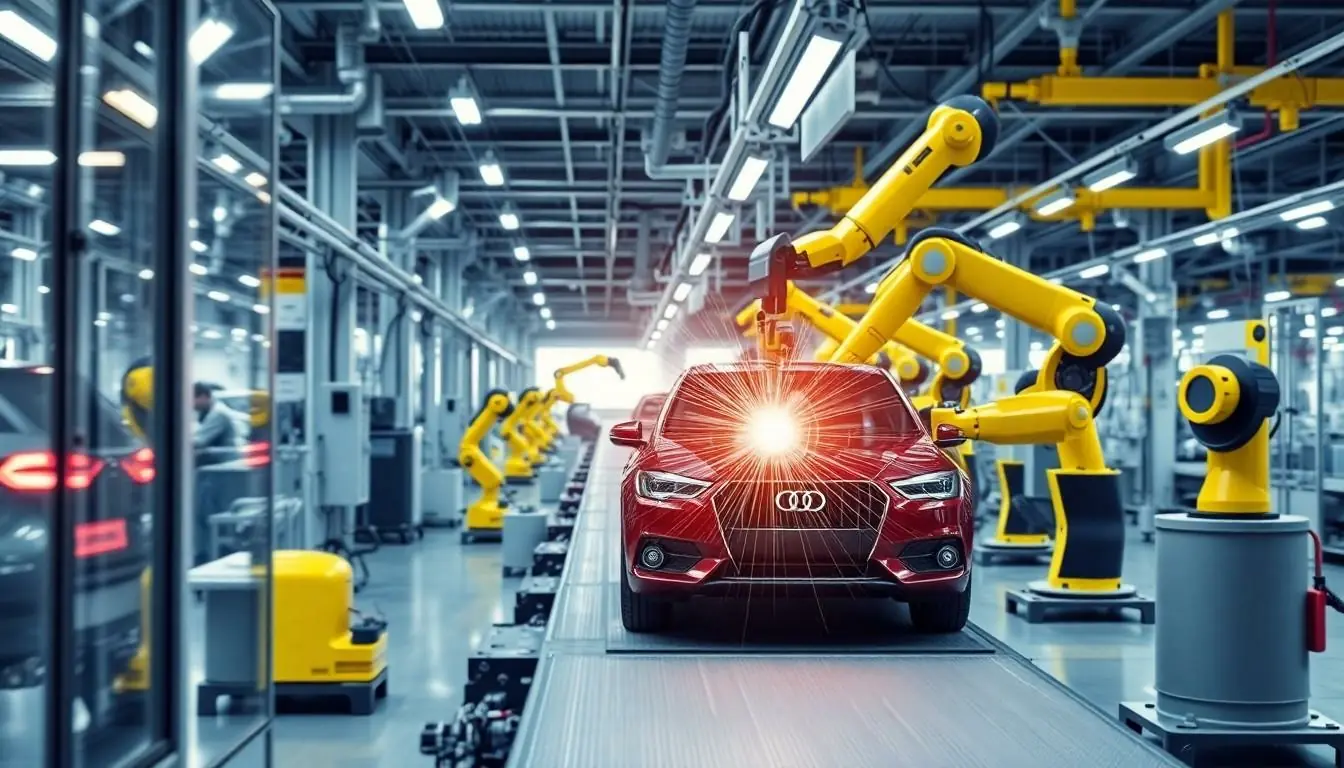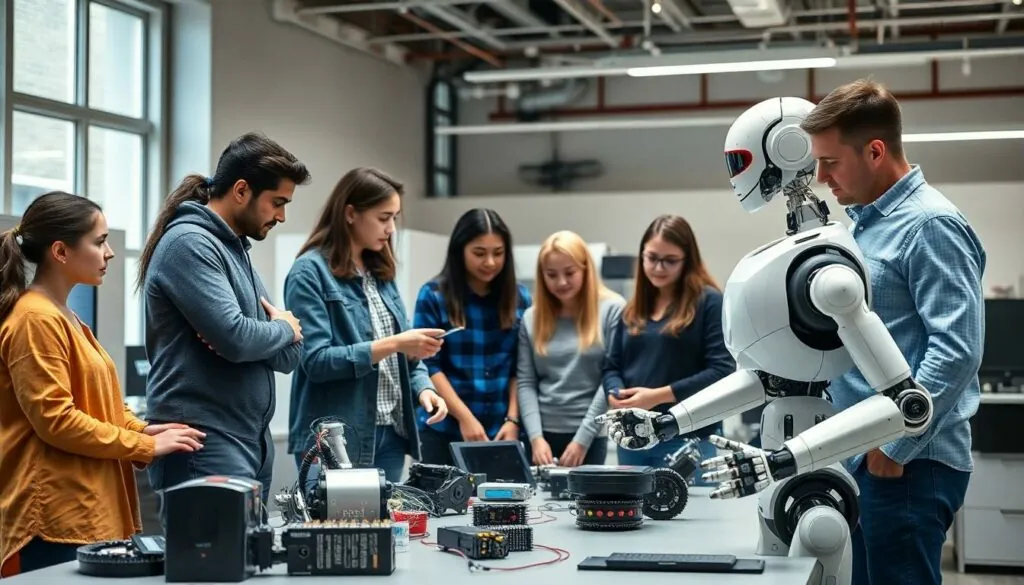Table of Contents
ToggleRobotics is no longer just the stuff of sci-fi movies. It’s taken a giant leap into everyday life, transforming industries and making tasks easier, faster, and sometimes even a bit quirky. From assembling cars to delivering pizza, robots are everywhere, and they’re not just here to take our jobs—they’re here to make our lives a whole lot more interesting.
Imagine a world where your vacuum cleaner has a personality and your lawn mower knows how to dance. With advancements in robotics, this isn’t just a dream. The applications of robotics stretch far and wide, impacting healthcare, manufacturing, and even entertainment. As these mechanical marvels continue to evolve, they’re poised to change the way we live and work, one hilarious mishap at a time. Buckle up as we dive into the fascinating world of robotics and discover how these tech-savvy creations are reshaping our future.
Overview of Robotics
Robotics encompasses the design, construction, operation, and use of robots in various applications. These machines, equipped with sensors and actuators, mimic human actions and respond to their environments. Industries like healthcare incorporate robotic systems for surgeries, enhancing precision and minimizing recovery times. Manufacturing employs robots for assembly lines, increasing production rates and ensuring consistency in product quality.
In agriculture, robotics facilitates tasks such as planting, harvesting, and monitoring crops. Automated machines can assess plant health and optimize resource use. The entertainment sector also benefits, with robots appearing in theme parks and filmmaking, adding immersive experiences for audiences.
Exploration of robotics extends beyond terrestrial applications. Space agencies utilize robots to conduct missions on other planets and gather data safely and efficiently. Drones, for example, perform aerial surveys and monitor environmental changes.
Education integrates robotics to teach coding and engineering principles. Students engage with robots, fostering creativity and problem-solving skills. This hands-on approach inspires future generations of engineers and inventors.
Financial services increasingly rely on robotic process automation for tasks such as data entry, fraud detection, and customer service. Streamlining these processes reduces errors and enhances operational efficiency.
Investments in artificial intelligence evolve robotics further. AI enables robots to learn from experiences, adapt to new tasks, and improve performance over time. This advancement leads to more autonomous systems capable of making decisions in real time.
Robotics continues transforming multiple sectors, playing a crucial role in driving innovation and efficiency. The journey of robotics promises exciting developments, shaping a future filled with possibilities.
Industrial Applications of Robotics

Robotics plays a crucial role in transforming industries through enhanced efficiency and accuracy. Industrial applications of robotics significantly impact manufacturing, quality control, and other sectors.
Manufacturing Automation
Manufacturing automation relies heavily on robotic systems to optimize production processes. Robots perform repetitive tasks such as assembly, welding, and painting with precision and speed. Increased production rates often result from utilizing industrial robots, allowing companies to meet growing demand. Flexibility in production allows robots to adapt to changing product designs with minimal downtime. For example, automotive manufacturers employ robots to assemble vehicles, achieving high levels of consistency and quality. Many companies report reduced labor costs and improved safety by integrating robotics into their operations.
Quality Control
Quality control benefits immensely from robotic applications. Robots equipped with advanced sensors and vision systems assess product quality at various stages of production. Automated inspections help detect defects that human inspectors might overlook, ensuring high standards in finished goods. Consistency in evaluations significantly reduces the chances of human error. For instance, electronics manufacturers use robots to inspect circuit boards for defects before final assembly. Enhanced quality assurance leads to higher customer satisfaction and retention. Thus, incorporating robotics into quality control processes drives operational excellence across various industries.
Healthcare Applications of Robotics
Robotics significantly influences healthcare through innovative solutions that enhance patient care and treatment efficiency.
Surgical Robots
Surgical robots improve precision in operations. These robots assist surgeons by providing enhanced visualization and greater dexterity. Data shows that robotic-assisted surgeries can reduce blood loss by up to 50% and shorten hospital stays by 20%. For instance, systems like the da Vinci Surgical System allow for minimally invasive procedures, leading to quicker recoveries. Surgeons rely on these technologies to perform complex tasks, benefiting from reduced fatigue and greater accuracy. Efforts in robotic surgery continue to advance, expanding into areas such as cardiology, urology, and gynecology.
Rehabilitation Robots
Rehabilitation robots support patient recovery and mobility. These devices provide consistent therapy, improving outcomes for individuals with neurological conditions or mobility issues. Studies indicate that using robotic exoskeletons can enhance rehabilitation results by up to 30% compared to conventional methods. Patients engage with these advanced systems for repetitive and precise exercises, promoting strength and coordination. Institutions increasingly implement robotics in physical therapy, enabling personalized treatments and real-time feedback, which motivates patients. The ongoing development of rehabilitation robotics shows promise for addressing the growing demand for effective therapy solutions.
Agricultural Applications of Robotics
Robotics significantly enhances modern agriculture, optimizing efficiency and resource management. As technology evolves, these applications transform traditional farming practices.
Precision Farming
Precision farming utilizes robotics to monitor crop health and optimize resource use. Drones equipped with imaging technology assess plant health, enabling targeted interventions. Automated tractors perform tasks like soil tilling and planting, reducing labor costs and improving efficiency. Sensors embedded in the soil measure moisture levels, helping farmers irrigate precisely when and where necessary. Data analytics further empower farmers by providing insights into yield potential and resource needs, allowing for informed decision-making.
Harvesting Robots
Harvesting robots automate the collection of crops, addressing labor shortages in agriculture. These robots use advanced vision systems to identify ripe fruits and vegetables, ensuring minimal waste during harvest. Robotic arms equipped with soft grippers pick delicate produce without damaging it. Many models operate in various light and weather conditions, increasing operational flexibility. The labor savings from these machines lead to reduced production costs and increased profitability for farmers, contributing to a more sustainable agricultural industry.
Domestic Applications of Robotics
Robotics significantly impacts everyday life, enhancing domestic tasks and security.
Household Robots
Household robots streamline daily chores, increasing efficiency and freeing up personal time. Robotic vacuum cleaners, like the Roomba, automatically clean floors, navigating various surfaces with ease. Dishwashing robots help with cleaning up after meals, ensuring spotless results. Additionally, lawn care robots maintain outdoor spaces without human intervention, allowing for a lush lawn year-round. These innovations simplify routine tasks, offering convenience and improved quality of life.
Security Robots
Security robots play a crucial role in safeguarding homes and public spaces. Equipped with cameras and sensors, these robots monitor surroundings continuously, alerting homeowners to suspicious activity. Some, like the Knightscope K5, patrol designated areas autonomously, capturing real-time footage for reporting. Drones also contribute, surveying larger properties and providing aerial insights. These advanced security systems enhance safety and peace of mind for residents and businesses alike.
The applications of robotics are reshaping the landscape of numerous industries. From enhancing surgical precision in healthcare to optimizing resource management in agriculture, robots are proving essential in driving efficiency and innovation. Their role in manufacturing and entertainment further illustrates their versatility and impact on daily life.
As robotics technology continues to evolve, the potential for more advanced and autonomous systems becomes increasingly evident. This evolution not only promises to improve productivity but also enriches human experiences with creativity and humor. The future holds exciting possibilities as robotics becomes an integral part of everyday life, enhancing both personal and professional realms.




